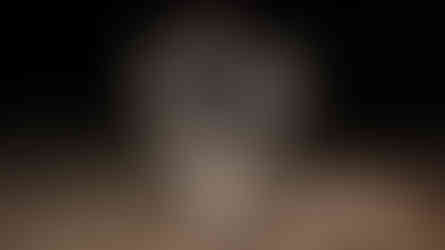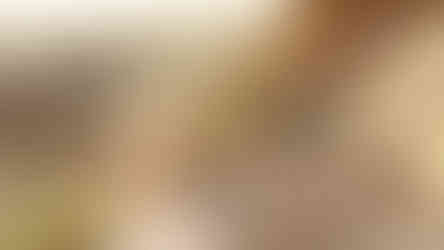Trophy Photos 101: Capturing the Memory
- CHASE'N THE KING
- Nov 19, 2020
- 5 min read
Grip and Grins. We've all taken them and we’ve all seen some that leave much to be desired. It shouldn’t have to be said that taking a couple extra minutes to get good pictures is worth it. However, it seems to get overlooked so often in the chaos and excitement of the moments after the kill. Odds are, your pictures will be the only thing that 99.9% of people ever get to see of your hard work and your trophy. They will interpret your story through the lens of your camera, so why not take the time and effort to make them positively represent the sport and your hard earned success?
These are some simple tips to a great trophy picture:
Clean up any visible blood. ( An animal obviously died but blood and gore will often detract from the photo and be distasteful to those outside the sport. Brush the nose and mouth, rub some dirt onto the wounds and absorb any dripping or pooling blood. )
Put the tongue back in its mouth. ( Another option is to simply remove it. Floppy tongues look tacky. Keeping it out of sight will help clean up the appearance of the face. )
Move the animal. ( If its an option find a spot with good lighting and skyline or an area where the background has as little clutter as possible. Often, you are forced to make do with the spot it laid to rest. Repositioning the animal in place may be your best option. )
Get the lighting right. ( A well lit photo without major shadows is often the goal. The sun can be a great backdrop during dusk and dawn or it can be used to illuminate the animal and hunter to mitigate shadows mid-day. Watch for glare and adjust accordingly. If it's after dark, use your flash or try to use more than one light source so that your flashlight doesn't cast noticeable shadows. A fill flash is also great for eliminating day time shadows. )
Skyline the animal. ( If possible, nothing gives better contrast to antlers or horns than the sky. )
Get rid of grass or brush. ( Clean up the foreground to eliminate shadows and blurry pics. This can also assist in covering up excessive blood. )
Showcase the Animal. ( Put the strong side towards the camera. Show off your animals strengths and take photos that capture the unique feature of the animal. )
Set the Legs. ( On antlered or horned game tuck the back legs under first, followed by the front. Then roll the body to a bedded position. For animals like bears the legs often look best when spread out perpendicular to the body as it is laying stomach down. )
Set up the body. ( Roll the animal into a bedded position. Rocks or sticks can be used as supports to keep the animal from rolling or to correct any awkward animal positions caused by the terrain. However, nothing looks less professional and inexperienced than a stick or pile of rocks noticeably wedged up against the antler or holding up the head. Use short and sturdy sticks placed strategically behind the ear, behind the front shoulder, and in front of the rear leg. If done properly this requires little to no effort to hold up the animals head properly for fantastic photo. Take your time if you need to do this, It is not always easy or quick. )
Position the head. ( Level is often best. On antlered game hold it from beneath the jaw, or supporting the antlers if needed. Gently lift its head from under the chin, with emphasis on hiding as much of your hand as possible. Don’t grab it by its ears or grip the back of its neck. Avoid wrapping your hands or fingers around the antlers obstructing them. Doing so can make the antlers look small and draws the eyes' focus to that spot. Instead place your hand on the animals back, hold the head up with the tip of the antler or behind the main beam. )
Sit properly. ( We’ve all seen it... The pics where someone is sitting noticeably far behind the animal to make it look bigger. With a proper set up, you don't have to do this and your animal will still look great. Sitting in front of the animal can have the opposite effect and make the hunter look disproportionately large compared to the animal. Behind is usually best, with a moderate amount of space between you and your trophy. Sit up straight and comfortably. )
Don't handle the animal awkwardly. ( It's dead, it's not going to get away. There is no need to sit on top of it or grip its throats like you just strangled it to death. However you set it up for your photo make sure you and it look comfortable and natural. Don't force it and don't disrespect it.
Smile. ( Mean mugging might have been cool when we were in high school, but you just filled your tag! Smile like you actually achieved something worth being proud of, because you did. Make sure it doesn't turn out like a mug shot. If you’re the one taking the pictures, crack a joke and remind your exhausted hunting partner that the best pictures don't come from forced cheesy grins or straight faces, they come from joy, excitement, and laughter.
Move the camera around. ( Shoot from different angles high, lower, left, right find different positions that show off the attributes of the animal. )
Self Timer. ( If you're solo or if you're trying to get everyone in the photo, set up the camera or phone on you your tripod and use the self timer feature. )
Frame your subject. ( Avoid cutting off part of the animal or hunter. Show appropriate amounts of the foreground and background. An image with a larger field of view can be more easily edited and corrected after the fact. Take a minute and look up "The Rule of Thirds" it will help you with composing your shot. )
Take more pictures than you think. ( Digital photos are free, don't get cheap! Take 10-15 pics at each angle. We typically take 40-60 of a single animal. Of those, 3-5 may be worth keeping. You only get one chance to take field pics so take substantially more than you think you'll want. On this same note, take a pics or a video walking up to the animal, candids while checking it out, as it lays, setting it up, breaking it down, loading it up, and packing it out. You never know when you’ll scroll through later and find a new favorite you overlooked before. )
Adapt. ( Very rarely does the situation allow you to create a clean and easy set up. Take care of the easy and simple things, evaluate the conditions, and make the best of it! A little effort goes a long ways. )
We get made fun of all the time by clients and friends to the effect of “oh I guess this is like a professional photo shoot, huh?” Yes it 100% is. The photos you take will legitimately last a lifetime and will showcase the experience far better than a shoulder mount above the fireplace. You will show coworkers, family members, friends, acquaintances, enemies ( for bragging rights 👊 ), people from church, random people that strike up a hunting conversation, etc. Done well it shows your reverence and respect to the animal.
It may seem like a lot but really it does go by quickly and you'll thank yourself later when those pictures are the envy of your buddies. Use that portable computer in your pocket that's conveniently equipped with a high end camera and start snapping away.
Author: Daniel Drown
Co-Author: Dillon Currie












































Comments